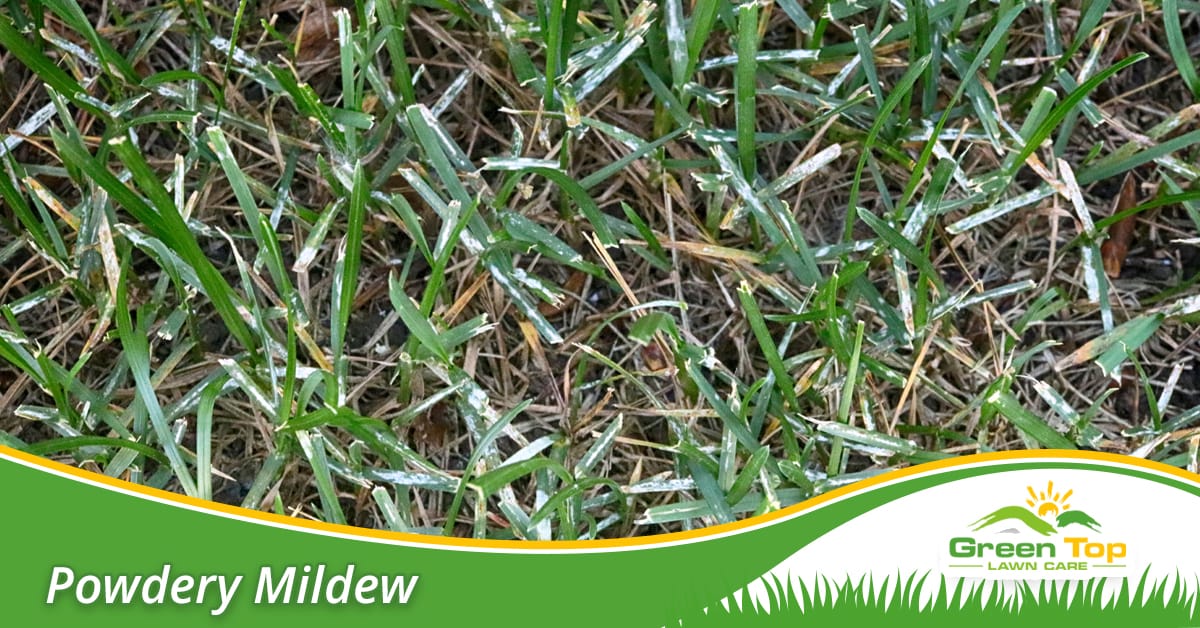Identify and Prevent Powdery Mildew in North Texas
Homeowners in North Texas often encounter powdery mildew, one of the most recognizable lawn-damaging diseases. Because powdery mildew requires targeted care, many residents rely on professional lawn care services to identify and effectively treat this common lawn disease. This fungal problem appears as a white or gray coating on blades of grass, dulling the color and weakening turf over time. And while it may begin in shaded or poorly ventilated areas, it can spread across larger sections if left untreated.

How to Identify Powdery Mildew
Powdery mildew is distinctive because of the dusty film it leaves on grass blades. At first, small patches may look as though someone lightly sprinkled flour across the lawn. As the fungus spreads, the blades become covered with white or gray growth that thickens over time. This coating interferes with photosynthesis, leaving grass weak and unable to maintain its vibrant green color. If the disease continues unchecked, the turf becomes thin and patchy, with areas that eventually die out completely.
Recognizing powdery mildew early gives homeowners the best chance to protect their lawns. Unlike other lawn-damaging diseases that create spots or circles of dead grass, powdery mildew has a more uniform appearance and thrives in shaded, damp conditions. When those conditions persist, it spreads rapidly and becomes increasingly difficult to control without professional treatment.
Conditions That Contribute to Powdery Mildew Development
This lawn disease thrives when grass is stressed by its environment. Shaded areas that receive little direct sunlight provide ideal conditions because air circulation is limited and moisture lingers. Lawns with compacted soil or excessive thatch also encourage mildew growth, as both conditions hold water near the surface. Even watering practices can contribute, since light, frequent watering keeps grass damp and vulnerable to fungal spread. Seasonal weather shifts, especially periods of high humidity in North Texas, further increase the risk of powdery mildew outbreaks.
Because these factors are difficult to manage consistently, the appearance of powdery mildew can happen to even the most attentive homeowners. And once powdery mildew does appear, cultural practices alone often won’t be enough to reverse the problem. This is why professional lawn disease treatment is so valuable. Lawn experts can identify the exact stage of disease development and apply fungicide treatments when they are most effective.
Preventing Powdery Mildew in Lawns
The best long-term strategy against powdery mildew is prevention through strong lawn health. Deep, infrequent watering promotes root growth and makes turf less susceptible to stress. Aeration relieves compacted soil and improves airflow, while proper fertilization ensures that grass receives balanced nutrition. Managing shade by trimming trees or thinning landscaping can also help, since sunlight naturally reduces fungal growth. And keeping thatch under control limits the environment where spores can hide and multiply.
Even with these efforts, conditions in North Texas neighborhoods can still favor disease development. When outbreaks occur, using targeted fungicide applications is the most effective way to stop powdery mildew from spreading. The timing of these treatments is important. If applied too early or too late, they may have little effect, but with expert guidance they can break the cycle of infection and restore lawn vitality. For this reason, many homeowners understand the value of hiring a lawn care service such as Green Top Lawn Care.
Prevent Lawn Disease With Experienced Lawn Care Services
Powdery mildew is more than an eyesore. It weakens turf, reduces curb appeal, and can lead to long-term lawn decline if left untreated. Acting quickly ensures the best results, and professional support offers the most reliable protection. Green Top Lawn Care provides expert diagnosis, effective treatments and preventive strategies to keep your lawn healthy in every season. Call (817) 684-4044 or request a free lawn disease control quote today.







